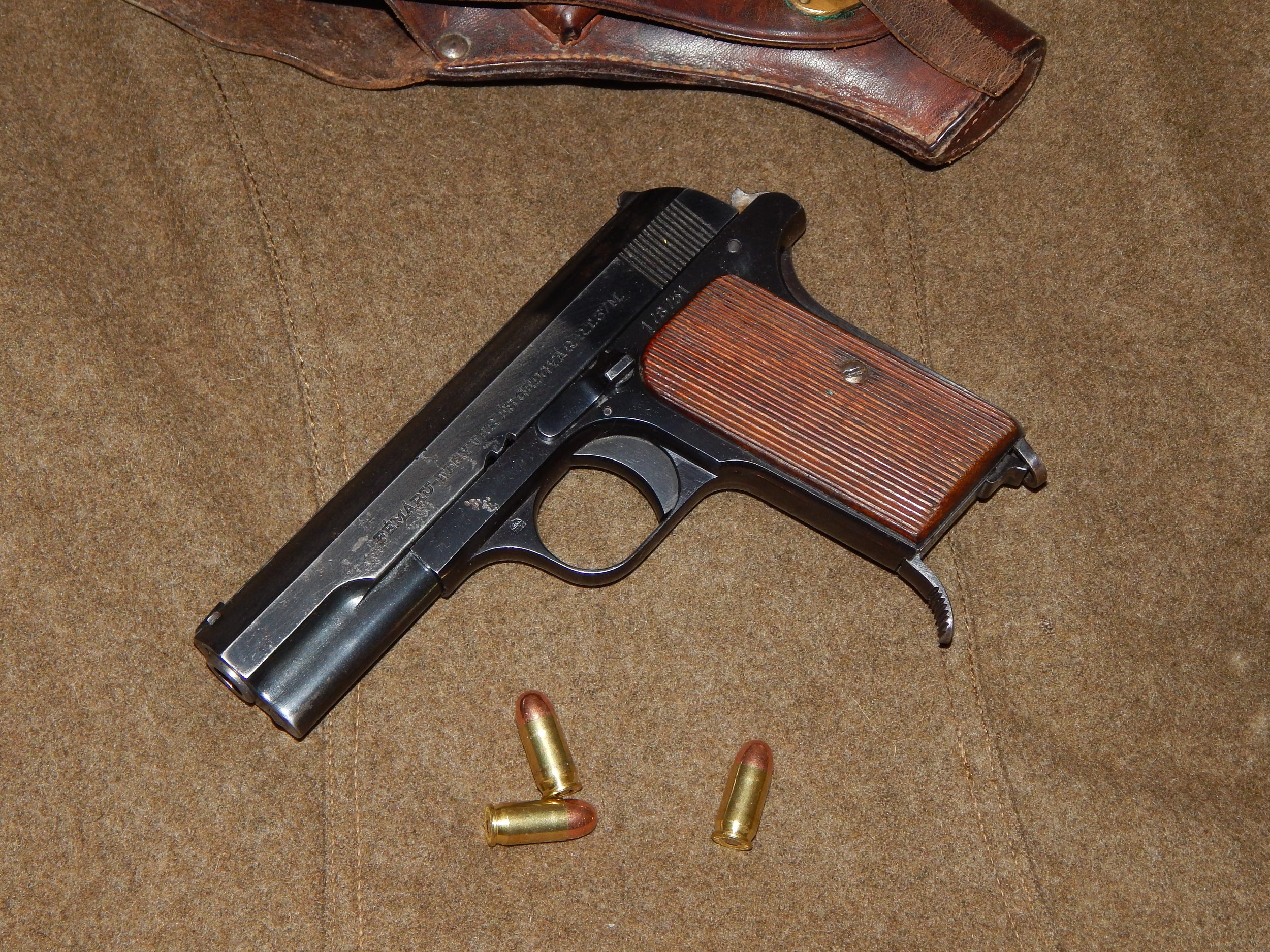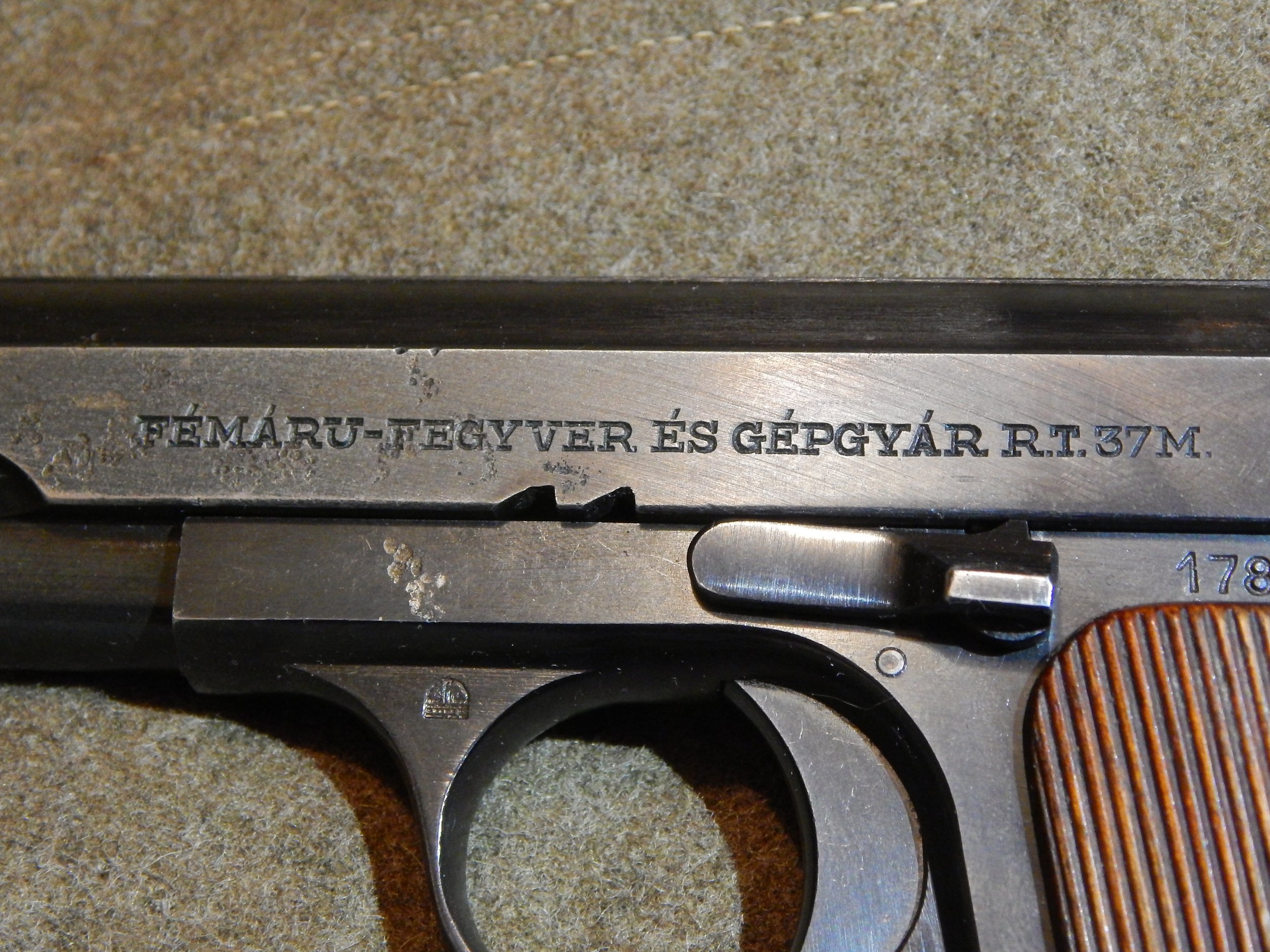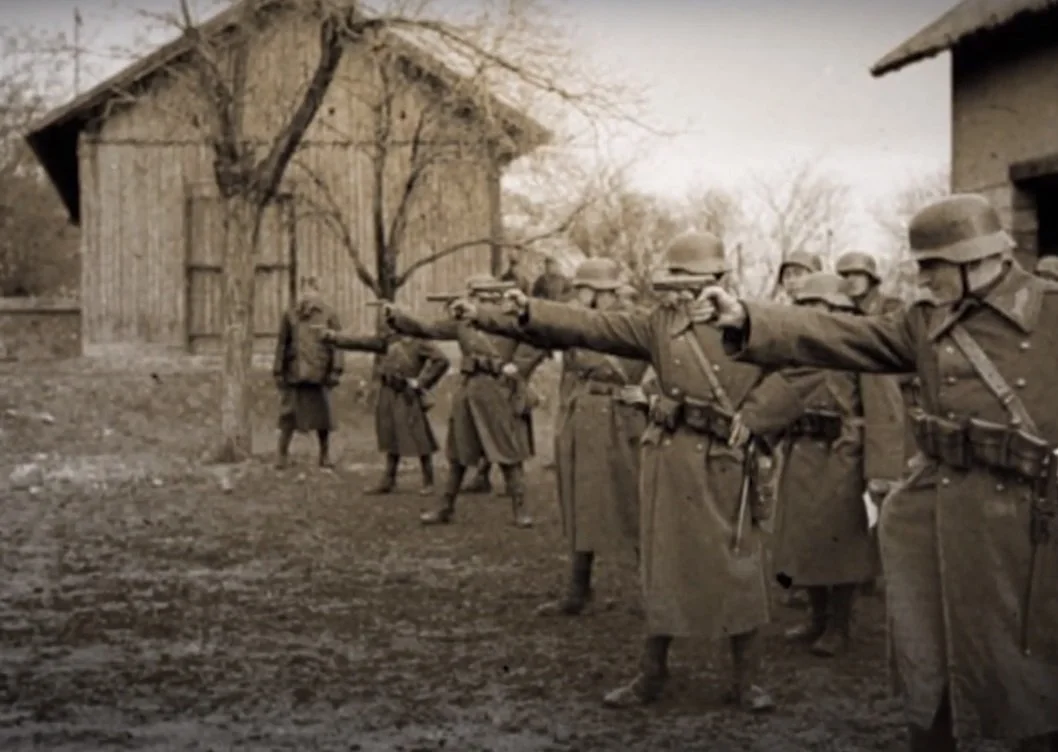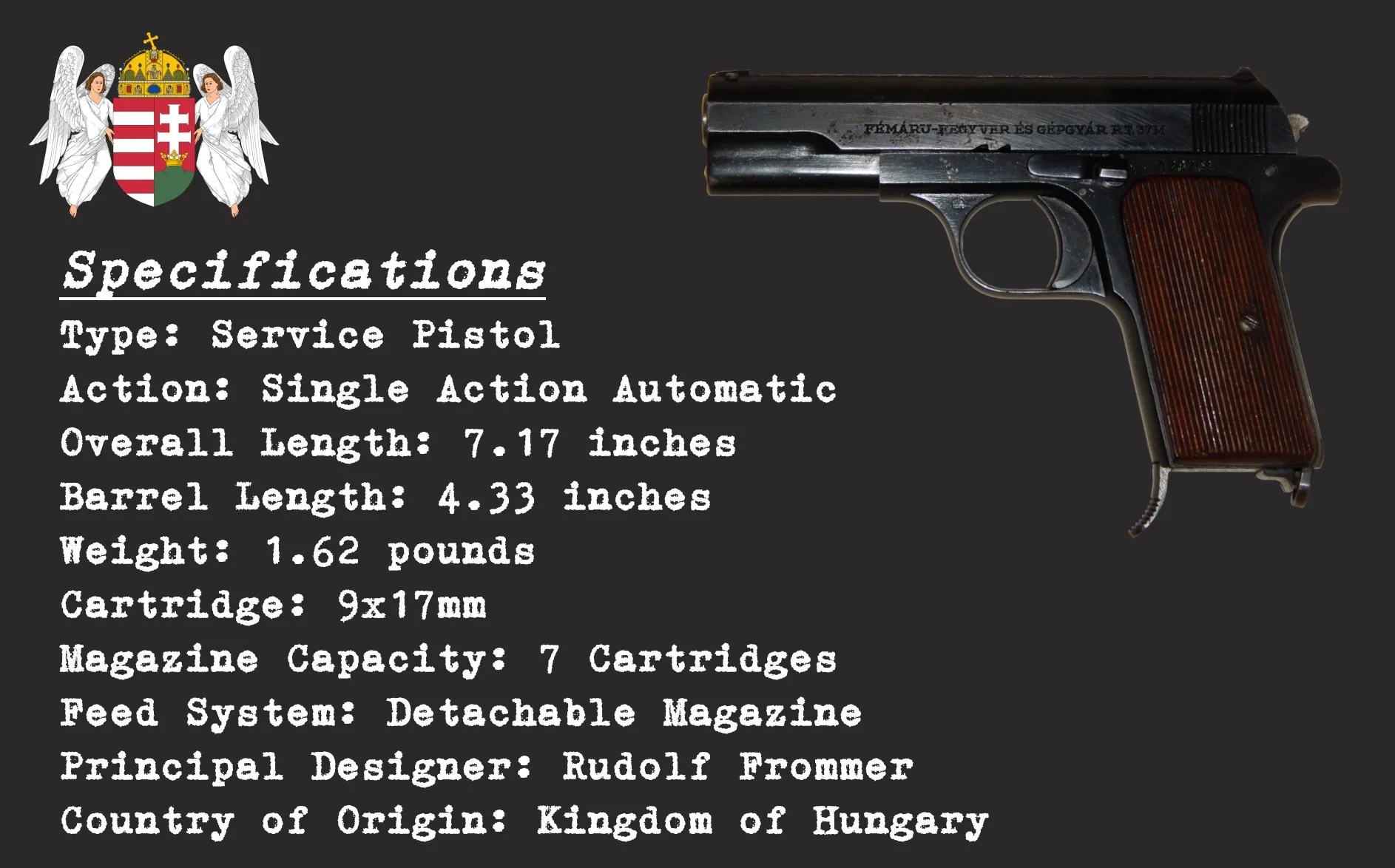FEG 37.M
The final design by the famous Hungarian Rudolf Frommer, the 37.M, commonly known in the US as the “Femaru”, is a very well made service handgun that is often overlooked by collectors today.
The History
The 37.M was an automatic pistol that represented the culmination of a series of several designs by Rudolf Frommer spanning decades. An upgrade of his 29.M pistol, he would die a year before its introduction, and most if not all of the actual work on the weapon was performed by his proteges at FEG in Budapest. With the Second World War looming in the late 1930s, the Army of Miklos Horthy’s Kingdom was in the market for a new, modern handgun to issue to its forces.
A simpler and more robust pistol than those that had preceded it, the 37.M was standard issue in the holsters of Hungarian soldiers during their participation in the invasion of Yugoslavia in 1941 as well as the subsequent war with the USSR, where the 37.M would prove to be a reliable weapon even under the harsh conditions encountered on the Eastern Front.
The sights of the pistol. Note also visible is the small hammer
The 37.M would also see use with the German military during the conflict, with a slightly modified version in 7.65mm with an added manual safety being produced by FEG on contract for the Germans, with most going to the Luftwaffe. Following the occupation of Hungary by the Germans in 1944 (after Horthy’s government began to explore options to withdraw from what was now a doomed conflict), production continued in a limited capacity, although whether this was to arm the forces of the new collaborationist regime or the Germans remains unknown. It is also possible that small numbers were produced after the war before the adoption of the Tokarev pistol, although that is again unconfirmed.
The FEG rollmark on the slide, which has given rise to the common moniker “Femaru” for these pistols in the United States. Note also the St. Stephen’s Crown crest on the trigger guard, in this indicating commercial manufacture.
The Design
The 37.M is a simple blowback design, notable replacing the breechblock mechanism of the earlier Frommer designs with a move conventional slide mechanism, with some visual cues from the Browning automatic pistols. In operation it is a simple blowback mechanism, with a single action trigger. A grip safety is present, and on the Hungarian issue models this is the only mechanical safety on the weapon (the German P.37 variant adds a manual thumb safety).
The pistol is chambered in the 9x17mm, with a seven round magazine retained by a heel catch. The grips on the pistol are made of wood and have distinctive vertical serrations, with a grip extender on the front end of the magazine to aid in operator comfort.
The grip safety of the 37.M
This Example
The example seen here was made in 1942, and is thus a wartime handgun. It features the high quality of production that can be expected of Hungarian firearms of the period, with a notably fine polish and blue finish. It appears to be a matching example, and came with an original leather flap holster. Light holster wear is present, but the weapon is in otherwise fine condition.
The 37.M disassembled
Opinions
The 37.M is, in the author’s opinion, an excellent handgun. A simple and robust design, it is somewhat hampered by its 9x17mm (.380 ACP) chambering, but is no worse than the contemporary Italian Beretta M1934 and better than the various 7.65mm (.32 ACP) handguns also in service at the time. The pistol balances fairly well, and is a comfortable pointer. Its simple mechanism is easy to clean and service in the field.
Despite being often overlooked, the 37.M is a beautifully made handgun with significant World War II history, and is well deserving of a spot in any collection.
Hungarian soldiers practive with their 37.M pistols during the Second World War
Observed Values and Frequency
Updated: February, 2024
AVERAGE VALUE (USD): $400 - $600
FREQUENCY: Rare
COLLECTOR’S NOTES: Less common but also less valuable than the similar German P37 in .32ACP






